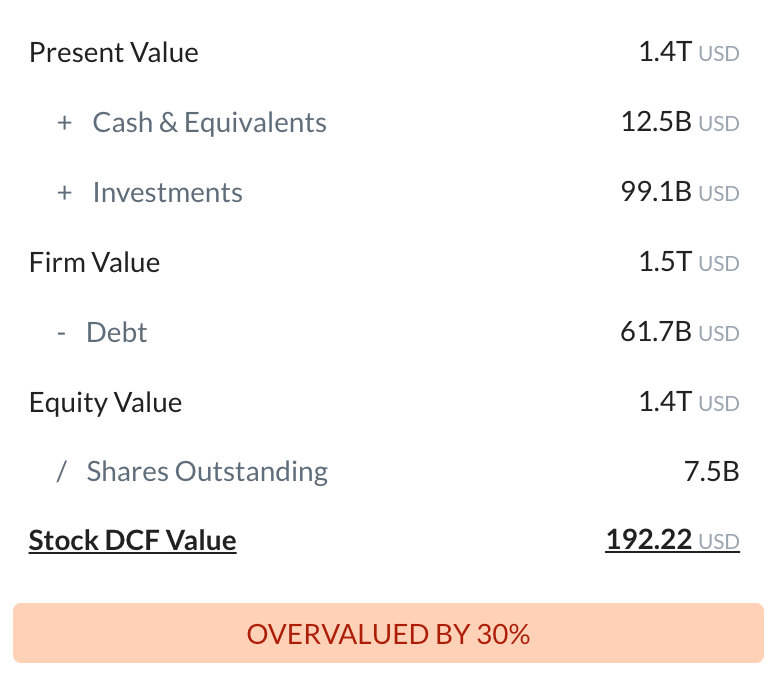
Woolworths Group Ltd
ASX:WOW


| US |

|
Johnson & Johnson
NYSE:JNJ
|
Pharmaceuticals
|
| US |

|
Berkshire Hathaway Inc
NYSE:BRK.A
|
Financial Services
|
| US |

|
Bank of America Corp
NYSE:BAC
|
Banking
|
| US |

|
Mastercard Inc
NYSE:MA
|
Technology
|
| US |

|
UnitedHealth Group Inc
NYSE:UNH
|
Health Care
|
| US |

|
Exxon Mobil Corp
NYSE:XOM
|
Energy
|
| US |

|
Pfizer Inc
NYSE:PFE
|
Pharmaceuticals
|
| US |

|
Palantir Technologies Inc
NYSE:PLTR
|
Technology
|
| US |

|
Nike Inc
NYSE:NKE
|
Textiles, Apparel & Luxury Goods
|
| US |

|
Visa Inc
NYSE:V
|
Technology
|
| CN |

|
Alibaba Group Holding Ltd
NYSE:BABA
|
Retail
|
| US |

|
3M Co
NYSE:MMM
|
Industrial Conglomerates
|
| US |

|
JPMorgan Chase & Co
NYSE:JPM
|
Banking
|
| US |

|
Coca-Cola Co
NYSE:KO
|
Beverages
|
| US |

|
Walmart Inc
NYSE:WMT
|
Retail
|
| US |

|
Verizon Communications Inc
NYSE:VZ
|
Telecommunication
|
Utilize notes to systematically review your investment decisions. By reflecting on past outcomes, you can discern effective strategies and identify those that underperformed. This continuous feedback loop enables you to adapt and refine your approach, optimizing for future success.
Each note serves as a learning point, offering insights into your decision-making processes. Over time, you'll accumulate a personalized database of knowledge, enhancing your ability to make informed decisions quickly and effectively.
With a comprehensive record of your investment history at your fingertips, you can compare current opportunities against past experiences. This not only bolsters your confidence but also ensures that each decision is grounded in a well-documented rationale.
Do you really want to delete this note?
This action cannot be undone.

| 52 Week Range |
29.2
36.79
|
| Price Target |
|
We'll email you a reminder when the closing price reaches AUD.
Choose the stock you wish to monitor with a price alert.

|
Johnson & Johnson
NYSE:JNJ
|
US |

|
Berkshire Hathaway Inc
NYSE:BRK.A
|
US |

|
Bank of America Corp
NYSE:BAC
|
US |

|
Mastercard Inc
NYSE:MA
|
US |

|
UnitedHealth Group Inc
NYSE:UNH
|
US |

|
Exxon Mobil Corp
NYSE:XOM
|
US |

|
Pfizer Inc
NYSE:PFE
|
US |

|
Palantir Technologies Inc
NYSE:PLTR
|
US |

|
Nike Inc
NYSE:NKE
|
US |

|
Visa Inc
NYSE:V
|
US |

|
Alibaba Group Holding Ltd
NYSE:BABA
|
CN |

|
3M Co
NYSE:MMM
|
US |

|
JPMorgan Chase & Co
NYSE:JPM
|
US |

|
Coca-Cola Co
NYSE:KO
|
US |

|
Walmart Inc
NYSE:WMT
|
US |

|
Verizon Communications Inc
NYSE:VZ
|
US |
This alert will be permanently deleted.
 Woolworths Group Ltd
Woolworths Group Ltd
Intrinsic Value
The intrinsic value of one
 WOW
stock under the Base Case scenario is
43.5
AUD.
Compared to the current market price of 30.27 AUD,
Woolworths Group Ltd
is
Undervalued by 30%.
WOW
stock under the Base Case scenario is
43.5
AUD.
Compared to the current market price of 30.27 AUD,
Woolworths Group Ltd
is
Undervalued by 30%.
The Intrinsic Value is calculated as the average of DCF and Relative values:

Valuation History
Woolworths Group Ltd

Uncover deeper insights with the Valuation History. Learn how current stock valuations stack up against historical averages to gauge true investment potential.
Start now and learn if your stock is truly undervalued or overvalued!
Stock is trading at its lowest valuation over the past 5 years.

To access the results of this valuation backtest, please register an account with us. Registration is quick and gives you instant access to insights on 3 stocks per week for free.
Historical valuation for  WOW cannot be conducted due to limitations such as insufficient data or other constraints.
WOW cannot be conducted due to limitations such as insufficient data or other constraints.
Fundamental Analysis

Select up to 3 indicators:
Select up to 3 indicators:
Months
Months
Months
Months
Select up to 2 periods:


Revenue & Expenses Breakdown
Woolworths Group Ltd

Balance Sheet Decomposition
Woolworths Group Ltd

| Current Assets | 7B |
| Cash & Short-Term Investments | 1.3B |
| Receivables | 1.1B |
| Other Current Assets | 4.6B |
| Non-Current Assets | 26.9B |
| Long-Term Investments | 678m |
| PP&E | 19.3B |
| Intangibles | 4.9B |
| Other Non-Current Assets | 2.1B |
| Current Liabilities | 12.8B |
| Accounts Payable | 7.8B |
| Other Current Liabilities | 5.1B |
| Non-Current Liabilities | 15.7B |
| Long-Term Debt | 14.4B |
| Other Non-Current Liabilities | 1.3B |
Earnings Waterfall
Woolworths Group Ltd

|
Revenue
|
67.9B
AUD
|
|
Cost of Revenue
|
-49.4B
AUD
|
|
Gross Profit
|
18.6B
AUD
|
|
Operating Expenses
|
-16.9B
AUD
|
|
Operating Income
|
1.6B
AUD
|
|
Other Expenses
|
-1.5B
AUD
|
|
Net Income
|
108m
AUD
|
WOW Profitability Score
Profitability Due Diligence

Woolworths Group Ltd's profitability score is 52/100. The higher the profitability score, the more profitable the company is.

Score
Woolworths Group Ltd's profitability score is 52/100. The higher the profitability score, the more profitable the company is.
WOW Solvency Score
Solvency Due Diligence

Woolworths Group Ltd's solvency score is 27/100. The higher the solvency score, the more solvent the company is.

Score
Woolworths Group Ltd's solvency score is 27/100. The higher the solvency score, the more solvent the company is.
Wall St
Price Targets
WOW Price Targets Summary
Woolworths Group Ltd

According to Wall Street analysts, the average 1-year price target for
 WOW
is 33.65 AUD
with a low forecast of 30.3 AUD and a high forecast of 38.54 AUD.
WOW
is 33.65 AUD
with a low forecast of 30.3 AUD and a high forecast of 38.54 AUD.
Dividends
Current shareholder yield for  WOW is
.
WOW is
.
Shareholder yield represents the total return a company provides to its shareholders, calculated as the sum of dividend yield, buyback yield, and debt paydown yield. What is shareholder yield?
Ownership
WOW Insider Trading
Buy and sell transactions by insiders

| Period | Sold | Bought | Net |
|---|---|---|---|
| 3 Months |
|
|
|
| 6 Months |
|
|
|
| 9 Months |
|
|
|
| 12 Months |
|
|
|
The intrinsic value of one
 WOW
stock under the Base Case scenario is
43.5
AUD.
WOW
stock under the Base Case scenario is
43.5
AUD.
Compared to the current market price of 30.27 AUD,
 Woolworths Group Ltd
is
Undervalued by 30%.
Woolworths Group Ltd
is
Undervalued by 30%.

































 You don't have any saved screeners yet
You don't have any saved screeners yet